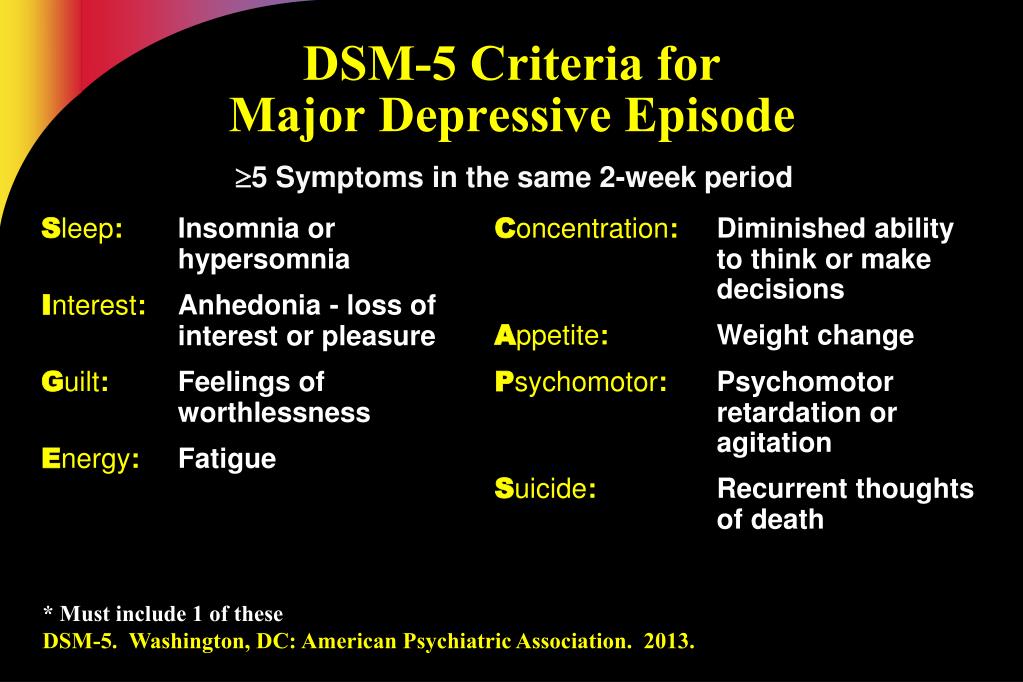

9-11 Neuroimaging can help clarify the nature of the neurologic illness among patients with neurologic deficits. 1 No specific laboratory test is available to diagnose major depressive disorder, but self-reported screening instruments are available to help.
#Symptoms of major depressive episode free
1 Screening tests to rule out other causes include complete blood cell count, comprehensive metabolic panel, thyroid-stimulating hormone, free T4, vitamin D, vitamin B12, rapid plasma regain, HIV test, electrolytes, liver function tests, blood alcohol level, arterial blood gas, urinalysis, and toxicology. 8ĭiagnosing major depressive disorder begins by ruling out other medical causes of depression through routine laboratory tests. 8 Nevertheless, there was a rise in the percentage of high school students from all racial and ethnic groups who felt persistently sad or hopeless, indicating an elevated risk of major depressive disorder among this demographic. Furthermore, Hispanic and multiracial students had higher chances of experiencing persistent feelings of sadness or hopelessness when compared with Asian, Black, and White students. 8 Based on the patterns observed, female students, LGBQ+ students, and those with same-sex partners were more prone to encountering mental health issues in comparison with their peers. This could be an indication of the presence of depressive symptoms. 8 As in previous reports, research continues to show that over 40% of high school students experience feelings of extreme sadness or hopelessness that last for at least 2 weeks, hindering their participation in everyday activities. The 2011-2021 Youth Risk Behavior Survey Data Summary and Trends Report presents the latest monitoring information and a decade-long analysis of health behaviors and welfare of teenagers, specifically high school students, in the United States. Other psychosocial factors contributing to depression include impaired social support, caregiver burden, loneliness, bereavement, and negative life events. 1 Older adults may become distressed when experiencing illnesses such as chronic pain because of decreased independence and disruption of social networks.

Stress and interpersonal losses can also increase the risk for depression. 7 Other genes that influence depression susceptibility are those involved in the serotonin system. 6 No specific gene associated with depression has been identified, but two susceptibility loci are linked to major depression in men and early onset or recurrent depressive episodes. 1, 5įirst-degree relatives of people with depression are 3 times more likely to develop depression than those without a family history of depression. 1 An imbalance in neurotransmitters such as serotonin, major life events or illnesses, or severe stress in early life can trigger major depressive disorder, or it can develop without a clear trigger. Multiple factors-including biological, genetic, environmental, and psychosocial factors-are believed to contribute to major depressive disorder.


 0 kommentar(er)
0 kommentar(er)
